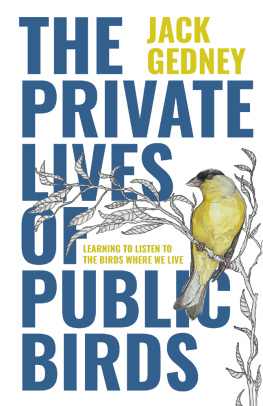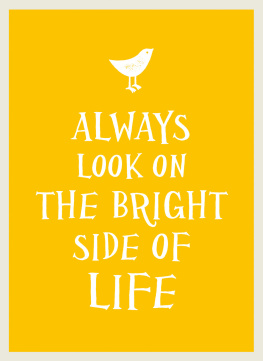Chapter One
HENRY FROMM had always liked foxes. The hardwood land of north central Wisconsin was famous for them, and before Henry knew A from B he could read the story of their footprints in the snow. The forest pressed close around the few cleared acres of his pioneer farm home, and its creatures were as familiar to Henry and his brothers as were their fathers horses, cows, and pigs. They were even more important, for only by trapping could they obtain the things all boys want.
Henry, youngest of four brothers who grew up together, couldnt remember when he had not heard talk of fur, and before he was able to set his first weasel trap he roamed the woods with John, two years older. They were a strange pair, Henry intense and eager, and even at six a husky chunk of a lad; John shy and remote, and as niggardly with words as an Indian. John loved the forest. He knew it better than the others, and sometimes disappeared in it for two or three days. His traps earned as much as those of his two older brothers.
The four depended for their income on skunk and weasel but caught an occasional raccoon and mink, and there was always the possibility of a red fox. Even grown men got only three or four in a winter, but John and Henry talked more of foxes than other animals. John, a born trapper, was challenged by their craftiness, Henry fascinated by the creatures themselves. Since he was old enough to hold a pencil he had drawn pictures of them, and imagined how wonderful it would be to have a fox of his own. Then he could be near it and watch it, really know it. He never followed a fox track without thinking of this, and although he knew that he and John could never overtake one, he always hoped to catch a glimpse of a red coat.
Maybe we could find young ones and keep them, he said.
John walked a hundred yards before he spoke.
You couldnt put collars on em, like on a dog, he said.
We could keep them in a box with chicken wire, Henry said. You and Id shoot birds and snare rabbits for them. And Id take care of them.
John considered the suggestion. Maybe it would work, he agreed at last.
Henry was thinking only of a fox, any fox, a creature of sagacity and of pride too, with eyes of intelligence and ears alert for the faintest warning. Having such an animal would be exciting, but later he became aware that there were even more glorious foxes than the reds which lived in their forests. He learned this when, with weasel pelts of his own to sell and fur prices of vital interest, he listened as the older boys read fur buyers price lists. Always at the top was the incredible sum of fifteen hundred dollars offered for the rare black silver fox. This never failed to arouse the wonder of the Fromm boys. It was exciting even to think that so fabulous a creature existed.
They always read the placards of itinerant fur buyers tacked on trees, and whenever they could afford it they bought a copy of Hunter-Trader-Trapper , a monthly magazine that was the trappers Bible. Walter, oldest of the four, always looked first at market reports. He worked hard at trapping because he wanted things, and in summer he added to his income by hoeing corn and potatoes for neighbors at fifty cents a day. He was no more industrious than the others, but he had learned what money could accomplish, and he always knew which fur buyers offered the best prices.
Weasel was usually quoted at fifty cents, and to Henry four skins from a winters work meant that he could buy more traps for next year. The other three were concerned with bigger sales. A double-striped skunk might be quoted as low as a dollar but a single-stripe brought more, and a short-stripe was worth three times as much. Raccoons did not bring much, mink varied, and a red fox might go as high as five dollars, although a trapper was prepared to take less. Buyers and trappers always differed on grading pelts. After the boys compared fur prices, guessed at the quality of their skins, and estimated the winters income, their eyes always went to the offer for a black silver fox. None of the boys believed a trapper would get that much, Edward least of all. He was the next oldest, but surer in his opinions than the others. He knew that the fur was precious and that only a few were caught each year, but buyers who haggled over the size and quality of a skunk were not merchant princes.
Those fellows would never pay fifteen hundred dollars for one skin, he said. If I caught a black silver Id take it right to St. Louis where you could find out what it was worth. What do you suppose it would really be?
The boys spent hours talking about how a man would feel and what hed do if he caught a silver fox. A discussion of the most dramatic event possible in any trappers life held a vicarious thrill for the older three. Henry listened, and wondered what a black silver would look like.
In 1901, when Henry was seven, he became sure that the silver fox must be the most beautiful creature in the world. Hunter-Trader-Trapper printed a picture and story of the pelt that had topped the London auction at twelve hundred dollars. Edward read it aloud after the chores were done that evening. Another skin had brought the record figure, eighteen hundred, the previous year.
Dont you wish youd got that one! Walter said. Were lucky if we get four dollars for a red.
John, now nine, had already caught a red fox, and Walter, thirteen, had two to his credit. Edward trapped as industriously as the others, but he was not an instinctive hunter. Already he was strongly set apart from his brothers. His features were finer, he was not so shy, and he looked ahead of the moment. His eyes, of the same intense blue, kindled as did Henrys to an idea. In many ways these two were alike, and yet strangely different.
When Edward finished reading, Henry reached for the picture of the famous pelt. More than the record price, it proved how wonderful such a creature must be.
Walter wished he knew where the fox was caught. Probably way up north in Canada, he said. No one around here ever got one, and thats funny when we have so many foxes.
But there could be one, Edward said.
The boys knew what he meant and now, with the picture before them, they thrilled to this possibility. Only recently they had read that it was definitely established that silver foxes could be born of red parents. Trappers still spoke of them as freaks, and Charles Darwin had pronounced them a separate species, but at the turn of the century evidence had piled up that the two were of the same family. It had been natures whim to make the lowly commoner, the red fox, capable of producing the aristocrat of fur land, while the cross fox, with its curious markings of red, black, and silver, was merely a red fox showing silver blood.









